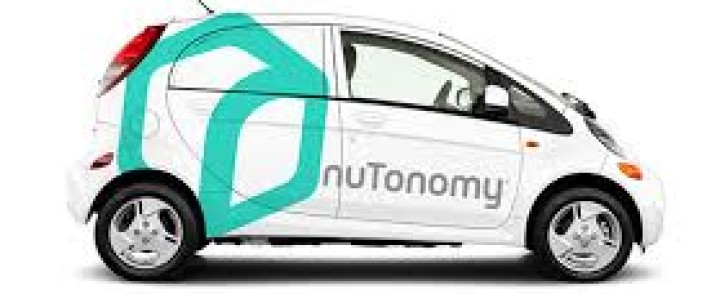How cheap will self-driving taxi services really be?
Dobromir Montauk is a builder of high-performing computer & human systems. In his blog ‘Car-volution’ he examines the cost of the self driving taxi:
I put this analysis together in March 2016 after many discussions with my father and friends about when self-driving cars were going to drastically change society. While most of them now agree it’s inevitable many still argue it’s 20 or even 40 years out (using the average age of U.S. cars as the primary variable).
My key insight is that electric vehicles + self-driving tech might create economic conditions where consumers abandon the vehicles already sitting in their driveways. This could drastically speed up adoption — my model says 5 years after self-driving tech is city-safe.
This also means that all the models for electric car adoption are wrong since it will not be driven by consumer purchasing/price-sensitivity but rather by amortized fleet cost. Disclaimer: I’ve invested in Tesla because of this belief and am long on Google hoping that they’ve finally got their shit together with Waymo. The Uber lawsuit is a good sign they care :
I am publishing this now because I ran into a deep analysis from RethinkX that finally gets it right. My numbers are simpler to digest although their model is more complete. Everything below is my own work and put down before reading that analysis.
Let’s start with a standard ICE and give it optimistic specs: 30 MPG, lifetime of 250,000 miles, for $40,000. Our per-mile cost comes out to:
- Vehicle: 16c
- Gas @ $2.50/gallon: 8.3c
- Insurance: 4c (my Metromile insurance is 3.2c/mile + $20/month)
- Tires: 1c ($600/60K miles is doable)
- Oil: 0.5c ($50 oil change every 10K miles)
- Other maintenance: 4c ($10K seems reasonable for a vehicle worth $40K)
- Taxes/fees: irrelevant (CA has about $100/year, and for 10K miles/year that’s 1c/mile — and these vehicles will be driving a lot more!)
That comes out to 33.8c/mile, which is lower than the 54c/mile than the IRS per-mile rate. So our estimate is probably generous to ICEs.
Electric vehicles have a much higher up-front cost because of their batteries and much lower maintenance cost because of the lack of moving parts. Most importantly, they will last a lot longer!
Tesla provides an infinite mile battery + drive warranty for 8 years — standard. Other maintenance is trivial and could probably be done for ½ of what Tesla charges, so say $500/50K miles. If we can get 1,000,000 miles out of the vehicle that gives us the following cost breakdown:
- Vehicle: 10c ($100K Tesla for 1M miles)
- Electricity: 4.5c
- Insurance: 4c
- Tires: 1c
- Other maintenance: 1c
That gives us 20.5c/mile.
Add in the the self-driving magic:
- Insurance should drop dramatically — say, 1c/mile. No more accidents!
- A Tesla can do 350 miles/day on a single charge. So it can charge during the cheapest possible time: at night. PG&E has special rates with <$0.12/kWh which shaves another .5c.
Now we’re down to 17c/mile. Today, Uber is charging 85c/mile in POOL (+ other fees). It would cost me >$40 to go 30 miles from my home in Redwood City to Twitter HQ or about $1.25/mile total. This clearly isn’t worth it when I can take Caltrain for $3.40 with a pass ($5 without).
With a self-driving, electric vehicle, Uber could charge me $0.20/mile, make a profit, and I’d pay $6 to commute in a private Tesla while I watch Netflix. Damn. What about the already-paid-for car in my garage? Without the 16c depreciation cost (we all forget the sunk-costs fallacy!) I’m “feeling” 17.8c/mile (my estimate) or up to 38c/mile (IRS estimate) driving it. So wait: just getting into that self-driving Tesla that showed up is cheaper than getting into my own car. Holy shit.
My prediction: the moment I can hail that robocar the market for second vehicles evaporates. Primary vehicles will survive longer because of consumer inertia/robocars won’t work for all purposes (road-trips, hauling furniture in your truck, etc), although my guess is mileage will drop even on primary vehicles (why pay for parking or skip that martini?). The U.S. has about ~2 cars/household and 255M cars so >100M cars will suddenly be abandoned. I think the limiting factor will be how quickly can robocars be rolled out.
This will have to happen in a market-at-a-time, Uber-style, because consumers want their vehicle quickly once they request it. So some cities/areas will “flip” before others. How long to convert the entire U.S.?
Tesla won’t need to build 100M cars of course: utilization will be much, much higher. Today, we can estimate a normal vehicle gets about 15,000 miles/year or about 40 miles/day. Our robocar could probably replace 10 vehicles: 18 hours at 25mph, or 400 miles seems reasonable. This may even be a low estimate since carpooling (much improved with everyone using robocars!) could replace 2–3 vehicles per trip. If we use 10x that means we’ll need 10M cars, distributed across the U.S.
Read more: https://medium.com/@dmontauk/car-volution-6fe768fdd1ae



